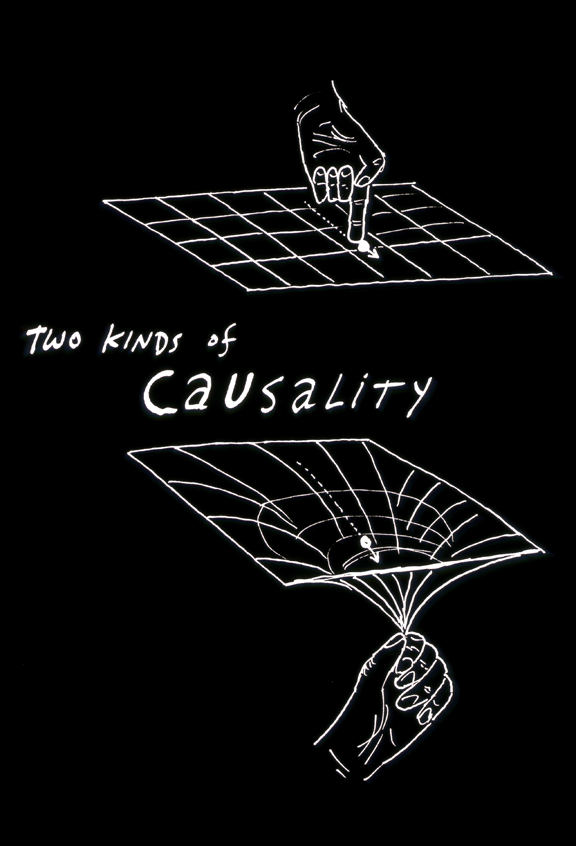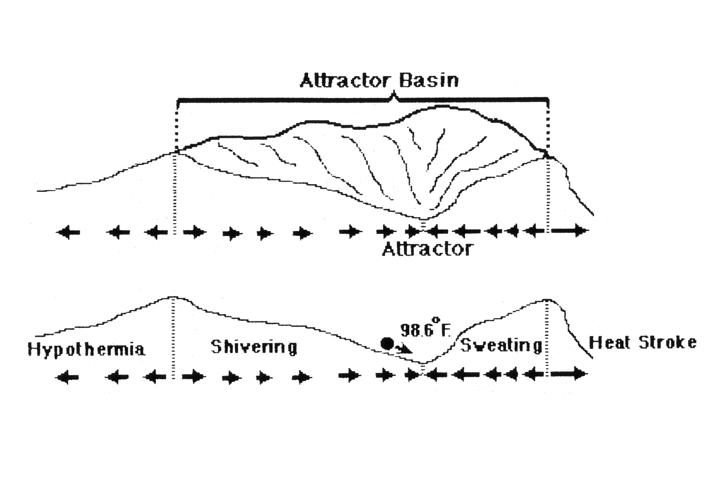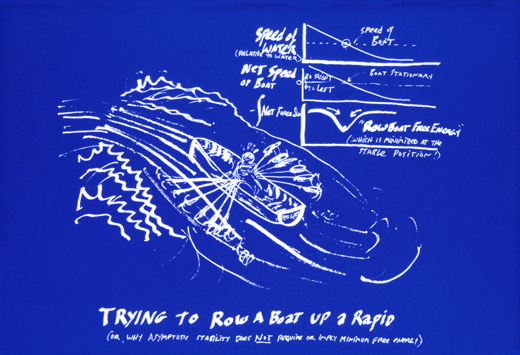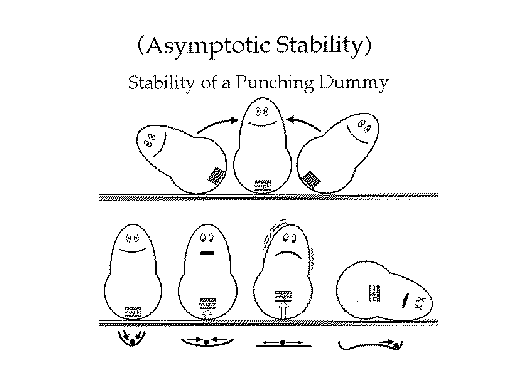Embryology Biology 441 Spring 2010 Albert Harris
Last lecture:
What do I really believe causes anatomical morphology?
Shape Homeostasis
(But I will be more favorably impressed by counter-arguments, than by acceptance)

In physiology, homeostasis is a central concept:
Negative feedback cycles keep body temperature constant in mammals & birds.
Too cold? Causes shivering? & other releases of heat & shunting blood flow away from body surfaces.
Too hot? Causes increased sweating. Also shunting of blood flow to surfaces.
So your body temperature is maintained constant at about 98 or 99 F. by counterbalance of active processes of heat generation and dispersal.
Temperature is just one of many quantitative properties of the body that are kept constant by homeostatic feedback.
Other examples are the pH of blood, K, Na, Cl ionic concentrations in body fluids.
Thermostats regulate the temperature of buildings, machinery incubators, ovens by negative feedback, closely analogous to biological homeostasis.
Please notice
#1) That there is a limited range of each variable from within which any given homeostatic mechanism can pull the variable back to "normal".

If you get too hot, heat stroke! Body mechanisms heat you further.
If you get too cold, hypothermia! Body heating mechanisms get weaker.
The "attractor basin" is the range within which homeostatic mechanisms are able to move the variable(s) back to normal.

#2) Within this basin, homeostatic mechanisms can create quantities, starting from some very different temperatures, chemical concentrations etc.
#3) The idea of shape homeostasis is that combinations of mechanical forces can obey negative feedback just as well as non-geometric variables.
Therefore the shapes of bones, blood vessels, etc. especially anything dynamic, can be created, maintained, repaired, and sometimes regenerated by negative feedback in which forces change strength as functions of geometrical shapes and arrangements.
Although Steinberg's differential adhesion hypothesis happens to be wrong in some details, (misinterprets effects of contraction as effects of adhesion, and that balances of forces equal minimization of free energy) he was headed in approximately the right direction.
Thermodynamics is a system for calculating balances between effects of pressure, volumes, chemical reactions & entropy, but it assumes there is no net flow of energy into the system.
"All springs and weights, and no motors"
In combinations of matter where there is no energy input, & all forces are reversible, then stable force balance equals minimization of free energy.
Steinberg's big mistake was not to realize that stable balances can also occur between non-reversible forces.

That's what happens in homeostatic control of temperature, etc. Imagine if someone claimed that the constancy of body temperature proves that 98 degrees minimizes free energy.
Physiology could have been held back 100 years.
Donald Ingber's theory of tensegrity is also on the right track, except I think he should consider fluid pressures, electro-osmotic pressure and some other forces. He is wrong to think that balances of opposed forces are sufficient to cause the stability of structures. Not only do forces need to be equal and opposite, but in addition stability requires that any distortion in shape will cause changes in the relative strengths of opposed forces, with all these changes being in whatever direction will push the system back toward their original state of balance. Only one shape allows exact counterbalance, and all shapes that differ slightly will cause forces to become imbalanced in whatever way will restore the one stable shape.
